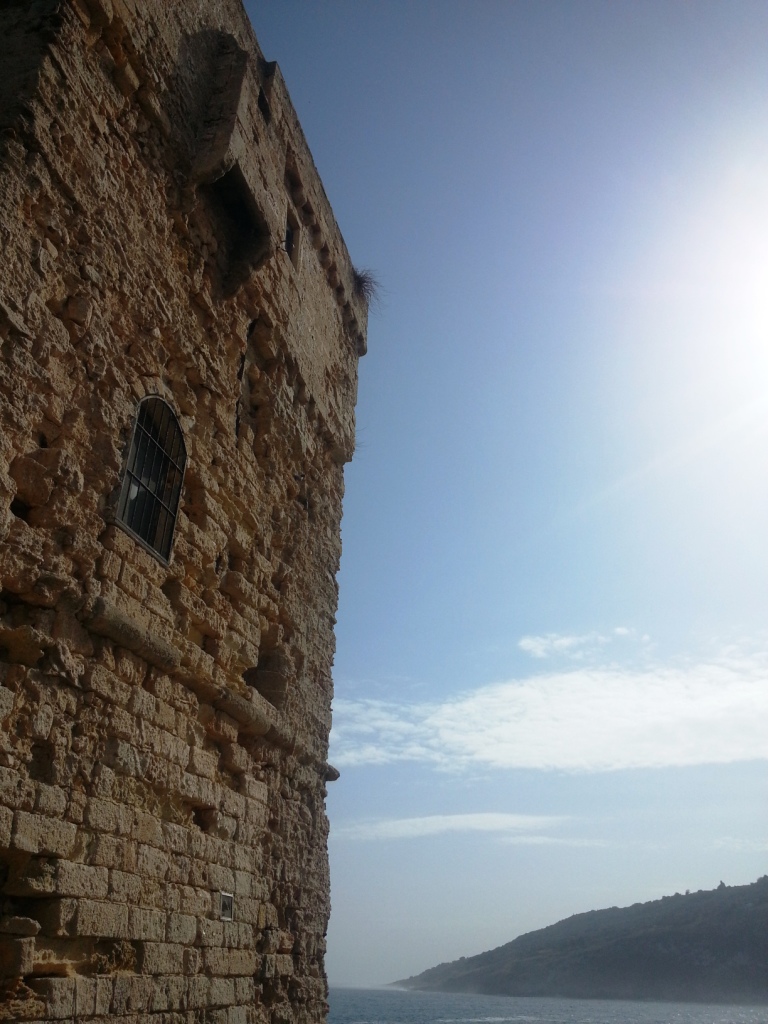SALENTO ARCHITECTURES – THE DEFENSE TOWERS by Giusto Puri Purini – Numero 7 – Aprile 2017
SALENTO ARCHITECTURES: THE DEFENSE TOWERS
Santa Sophia became the “Great Mosque” and a new, great, cultured and aggressive superpower emerged from the Eastern Mediterranean, and quickly came into conflict with the Republic of Venice that, until then, had freely sailed from the Adriatic Sea to the Aegean Sea, with its merchant flows and countless placements and dominions, from Dalmatia to Asia Minor and beyond.Puglia became a strategic knot for Ottoman raids and, despite the occupation of the peninsula in 1484 by the Venetians (that arrived in Taviano), the latter could no longer bend their impetus.Algerian Khaided-Din (called Barbarossa), in 1537, destroyed Castro and Marittima and, on the ionic side, the ancient Ugento.The defense system of Puglia, and in particular of Salento, was unprepared and precarious; between works dating back to the ancient Romans, then to the Byzantines (to defend themselves from the Longobards and Aragoneses), built in the previous centuries in the form of fortified towers and fortified farms, it was no longer up to the task.At this point, in the European context, the fierce conflict between Francis I King of France and Charles V of Spain came to favor the latter and led him to govern a large part of Europe.
The history of Salento is dotted with a myriad of invasions: at first, by populations who became stationary, such as the Messapi and the Japigi; then by the Greeks; Incursions of Saracen pirates, attacks and looting, up to the great danger of the Ottomans which, among other things, cherished in the idea of reuniting the Roman Empire of the East with Rome. It was therefore under the Empire of Charles V that in 1532 the Viceroy of the Kingdom of Naples, Pietro de Toledo, promoted an impressive and strategic first line of defense along the Adriatic and Ionian coasts of Puglia, with the vast promontory extended in the heart of the Mediterranean. As a defense system urbanist he made a project where every tower could see and report dangers to the next one. Horns and bells, or visual alarms such as smoke (in daylight) and fire (at night) were used as an alarm. A second line of defense were the fortified farmhouses and, more inward, imponent castles, among which the Acaya one still stands out today. The ordinance of the Viceroy was strengthened in 1563 by the decree of Don Pedro Afan de Ribera.
This Italy, stretched and bathed by the waters almost everywhere in its circumnavigation, “offered” and acted as attraction and magnet for other populations.
The biblical exodus that millions of people carry out daily in recent years, puts in motion old grudges, fears and imbalances, and there is the need for a new conscience that will bring the great States (colonisers) to develop jobs and margins for a potential growth in the original places, in order to bring our Mediterranean back to being, as it was, a place for merchants, economic-financial exchanges, culture, religion, thought and work.
In 1529, after other conflicts and finally an agreement with Pope Clement VII, Charles V received the recognition of his “sought-after” possessions in Italy, among which the Kingdom of Naples, that included the beloved Puglia (where, morover, he never arrived).
The cost of this endeavour had become so high that, through competition announcements, titles were awarded to those who were willing to build towers, assigning it the title of “Captain of Tower”, who, besides reporting raids and defending with cannons and archibugs, could also collect duties. Whoever did not pay was denied the “right” of defense.
The Towers were then also used to contrast smuggling, that was partially tollerated, to prevent abusive salt trade that was big in those times, given the poverty of peasant populations, and to intercept slave traffic. Those constructed by Charles V, made of regular tuff quarried stones, generally had square or circular planes, with a sloping base; inside there usuallt were 2 levels, and a covered terrace; slits and gratings completed the facade. The Towers were provided with an underground cistern to collect rainwater. In some cases, today, they belong to port authorities and are still efficient whilst many are just ruins (unfortunately) and others have been restored. As Mario Muscari Tomajoli says, “The building of Fortified Observation points has been reported since Plutarch (125-50 BC) and was also made by the Romans, whose trade was put into crisis by pirates until 67 BC, when the Gabinia law allowed Pompey to arm a fleet against ravagers and made the Mare Nostrum calm.”
But this defense system does not exist only in Puglia and in the lower Salento, but in all of Italy’s and many other coasts of the Mediterranean, and marks, as a punctuation in the maps,
the relationship of love and fear that the great sea carried brought.
Italy’s primacy of civilization, history, fertility of nature and costume imposed the need for self-defense systems, and today
these wonderful constructions, in the rhythmic flow
of landscapes, become indelible signs of history.

















